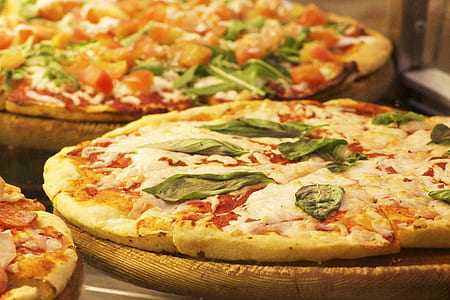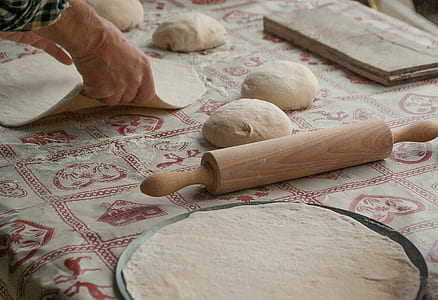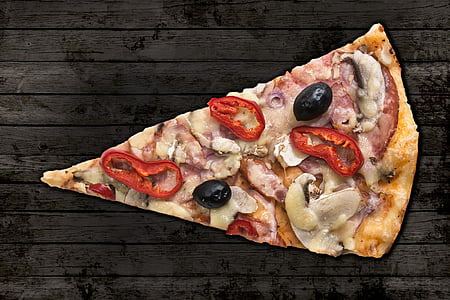
The Science Behind The Flavor Of Caramelized Onions
The Maillard Reaction
Caramelized onions are a culinary marvel, remodeling humble onions into a sweet, savory, and deeply flavorful ingredient. The magic behind their transformation lies in a fancy interplay of chemical reactions, primarily the Maillard response and sugar breakdown.

The Maillard reaction, a chemical reaction between amino acids and decreasing sugars, is the driving pressure behind the browning and flavor growth in caramelized onions. When onions are heated, their sugars, primarily fructose and glucose, interact with amino acids present within the onion’s proteins. This interplay results in the formation of tons of of flavorful compounds, contributing to the complicated aroma and taste.

As the onions cook and the temperature rises, the sugars bear additional transformations. Fructose and glucose, the primary sugars in onions, begin to interrupt down into less complicated sugars, together with caramels and furfurals. These compounds contribute to the distinctive candy and nutty notes of caramelized onions.
Here’s a breakdown of the important thing processes involved:
- Maillard Reaction: This response happens when sugars and amino acids react underneath heat, creating a posh array of taste molecules.
- Sugar Breakdown: As onions cook, sugars like fructose and glucose break down into less complicated sugars, contributing to the sweetness and complexity of flavor.
- Caramelization: The breakdown of sugars at higher temperatures creates caramels, answerable for the rich, brown color and sweet flavor.
- Furfurals Formation: Furfurals are risky compounds fashioned throughout sugar breakdown, contributing to the distinctive aroma of caramelized onions.
These reactions work in concert to create the distinctive taste profile of caramelized onions. The Maillard reaction contributes a savory, umami observe, while the breakdown of sugars offers sweetness and a nuanced complexity. The caramelization course of lends a deep, rich shade and a distinctive sweetness. These reactions, together with the unstable compounds produced, create the unimaginable depth of flavor that makes caramelized onions so beloved in the culinary world.
The Maillard reaction, a fancy series of chemical reactions, is the driving force behind the irresistible taste of caramelized onions. This reaction, named after French chemist Louis-Camille Maillard, happens when sugars and amino acids, current within the onions, are heated collectively. It is a fascinating journey of molecular transformation, ensuing in the creation of lots of of different fragrant compounds.
As you heat onions, the sugars, primarily fructose and glucose, begin to interrupt down and type reactive intermediates. These intermediates then react with amino acids, the constructing blocks of proteins, discovered within the onion cells. The reaction begins slowly at first, but as the temperature rises, it accelerates, resulting in a cascade of chemical transformations.
The initial step involves the condensation of a sugar molecule with an amino acid, making a Schiff base. This unstable compound then undergoes a sequence of rearrangements and dehydration reactions, leading to the formation of various melanoidins, brown-colored pigments answerable for the attribute color of caramelized onions.
But the magic of the Maillard response goes beyond color. The course of additionally creates a symphony of flavors. Hundreds of volatile compounds, together with aldehydes, ketones, and pyrazines, are released during the response, every contributing to the complex style profile. These compounds are responsible for the sweet, savory, and barely bitter notes that make caramelized onions so irresistible.
Specific amino acids like cysteine and lysine play an important position in the Maillard reaction, leading to the production of unique aromas. Cysteine contributes to the formation of sulfur-containing compounds, which impart notes of onion and garlic. Lysine, however, is concerned in the creation of pyrazines, which contribute to the attribute toasty and nutty flavors.
The length of heating additionally influences the flavour growth. Longer cooking occasions result in the formation of more complicated compounds, leading to a richer and more nuanced flavor profile. This is why slowly caramelizing onions over low warmth produces essentially the most fascinating results.
The Maillard reaction just isn’t restricted to onions; it is liable for the flavors of roasted meats, toasted bread, and even espresso. It is a testomony to the incredible complexity and great thing about chemistry, permitting us to enjoy the myriad flavors that make food so enjoyable.
Other Chemical Processes
Caramelized onions are a culinary delight, adding a rich, sweet, and savory depth to numerous dishes. The transformation from pungent raw onions to their luscious caramelized counterparts is a wonderful example of chemical reactions at work.
The strategy of caramelization begins with the breakdown of sugars inside the onion. As onions are heated, their pure sugars, primarily fructose and glucose, undergo a sequence of advanced reactions. These sugars initially break down into simpler molecules, and as the temperature rises, they begin to dehydrate, dropping water molecules.
This dehydration triggers a cascade of reactions, resulting in the formation of assorted intermediate compounds. These compounds include Maillard reaction products, which contribute to the savory and nutty flavors, and caramelan, a caramel-like substance answerable for the characteristic brown colour.
Caramelization is a delicate dance between warmth and time. Overheating can lead to burning, producing bitter and unsightly flavors. The best temperature for caramelization is round 300°F (150°C), permitting the sugars to break down and react without scorching.
As the onions caramelize, their texture modifications dramatically. They soften and turn out to be translucent, their sharp chunk changed by a mild sweetness. The Maillard response products, with their savory notes, add a posh dimension to the flavour profile.
The caramelization process is further influenced by the presence of acids, corresponding to those found in vinegar or citrus juice. Acids help speed up the breakdown of sugars, contributing to faster caramelization and a more pronounced flavor.
The science behind caramelized onions is a testomony to the intricate interaction of chemistry and culinary artwork. Understanding these reactions permits cooks to control the method, creating onions with the perfect steadiness of sweetness, savory notes, and a rich, caramelized character.
Whether utilized in a basic French onion soup, as a topping for burgers, or simply as a flavorful side dish, caramelized onions are a flexible and scrumptious ingredient, their complicated flavors a testament to the ability of chemical reactions in the kitchen.
Caramelized onions are a culinary staple, including depth and complexity to dishes starting from burgers and pizzas to soups and stews. Their wealthy, sweet, and savory flavor is the end result of a series of chemical reactions that happen when onions are cooked slowly over low heat.
One of the key compounds responsible for the attribute flavor of caramelized onions is pyrazines. These nitrogen-containing heterocyclic compounds are fashioned by way of the Maillard reaction, a fancy collection of chemical reactions that happen between amino acids and sugars. The Maillard reaction is liable for the browning of meals, and it additionally produces a variety of risky compounds that contribute to the aroma and taste.
In the case of onions, the Maillard response happens between the amino acid cysteine and the sugar fructose. The response starts with the formation of a Schiff base, which is an unstable intermediate compound. This Schiff base then undergoes a series of rearrangements and eliminations, finally resulting in the formation of pyrazines.
Different pyrazines contribute different flavors to the caramelized onions. For example, 2-acetylpyrazine is responsible for the nutty and toasty notes, whereas 2-ethylpyrazine contributes a roasted, earthy flavor. Other pyrazines contribute to the candy, savory, and umami flavors of caramelized onions.
In addition to pyrazines, other risky compounds, similar to sulfur-containing compounds, aldehydes, and ketones, also contribute to the flavour of caramelized onions. These compounds are shaped by way of totally different chemical reactions, including the breakdown of sugars and the oxidation of sulfur-containing amino acids.
The specific taste profile of caramelized onions could be influenced by a number of factors, together with the variety of onion used, the cooking time and temperature, and the presence of different components. For example, adding a small amount of vinegar or sugar can improve the sweetness and depth of taste of caramelized onions.
The science behind the flavour of caramelized onions is advanced and interesting. By understanding the chemical reactions that occur throughout caramelization, we are able to acquire a deeper appreciation for the culinary artwork of reworking simple ingredients into flavorful and complicated dishes.
Factors Affecting Flavor
The flavor of caramelized onions is a posh symphony of candy, savory, and umami notes, achieved via a collection of chemical reactions that happen in the course of the gradual cooking process. It’s not just about browning; it is about remodeling the onion’s composition and Pizza Roll Recipe unlocking its hidden potential.
The journey begins with sugars. Onions include fructose, glucose, and sucrose, that are liable for the preliminary sweetness. As the onions cook dinner, these sugars break down into simpler types, leading to a deeper, extra complicated sweetness.
Next comes the Maillard reaction. This chemical reaction between amino acids and sugars creates lots of of new taste compounds, together with aldehydes, ketones, and pyrazines. These compounds contribute to the savory and nutty notes that we affiliate with caramelized onions.
As the onions proceed to prepare dinner, they bear dehydration, concentrating the sugars and flavors. This additionally intensifies the Maillard response, leading to even more complex flavors. The onions turn into soft and pliable, with a deep, golden brown colour.
The heat used is crucial. A sluggish, even warmth allows the sugars to interrupt down progressively and the Maillard reaction to occur at its optimum temperature. High heat can result in burning and bitterness, ruining the delicate balance of flavors.
The type of oil used additionally plays a job. A neutral oil like vegetable oil is ideal for caramelizing onions as it will not impart its own flavor. However, a flavored oil like olive oil can add a singular twist to the ultimate outcome.
Finally, endurance is the vital thing. Caramelizing onions is a sluggish course of that requires time and a spotlight. The transformation from a uncooked onion to a flavorful masterpiece is a testomony to the magic of chemistry and warmth.
The taste of caramelized onions is a fancy symphony of candy, savory, and umami notes, influenced by a fragile interplay of time, temperature, and chemical reactions. It’s a transformation that takes place not simply on the stovetop, but additionally throughout the onion itself.
At the heart of this transformation are sugars. Onions comprise fructose, glucose, and sucrose, that are liable for their inherent sweetness. As onions caramelize, these sugars undergo a process known as Maillard response, a chemical reaction between amino acids and lowering sugars that happens at excessive temperatures. This response produces lots of of volatile compounds, answerable for the rich, complicated aromas and flavors we associate with caramelized onions.
The time spent caramelizing onions is crucial. It takes time for the sugars to break down and react, creating those advanced flavors. Low and slow is the key here. High heat can result in burning and bitterness, ruining the fragile balance of taste. Over time, the onions soften, releasing moisture and concentrating their sugars. This concentration intensifies their sweetness and enhances their overall flavor.
The chemical reactions proceed past the stovetop. Caramelized onions bear additional transformations as they cool and rest. These reactions contribute to the development of deeper, extra nuanced flavors. This is why letting your caramelized onions relaxation for a bit before utilizing them is beneficial.
Another factor that influences the flavour is the sort of onion used. Yellow onions are the most typical choice for caramelizing as a outcome of they have a great steadiness of sweetness and pungency. Red onions supply a more intense taste, while white onions are sharper. Experiment with totally different varieties to discover your preference.
Finally, additionals can further improve the flavour of caramelized onions. A pinch of salt might help draw out moisture and intensify sweetness. A splash of vinegar can add complexity and balance out the sweetness. You can also experiment with herbs and spices, corresponding to thyme, rosemary, or bay leaves, to create unique taste profiles.
The caramelization process is a testomony to the intricate science behind meals. It’s a reminder that time, temperature, and chemical reactions play a significant role in creating the flavors we take pleasure in. So, subsequent time you savor the sweet, savory notes of caramelized onions, take a second to understand the complicated interaction of factors which have introduced this culinary masterpiece to life.
The taste of caramelized onions is a fancy interplay of a number of elements, together with:
1. Maillard Reaction:
This chemical reaction between amino acids and sugars, initiated by warmth, is responsible for the development of the distinctive brown colour and rich, savory taste of caramelized onions. The response produces tons of of aromatic compounds, including aldehydes, ketones, and pyrazines, which contribute to the advanced taste profile.
2. Sugar Concentration:
Onions naturally include sugars like fructose, glucose, and sucrose. As the onions cook, these sugars caramelize, producing a candy and barely bitter taste. The greater the sugar content, the extra pronounced the sweetness and caramelized notes might be.
3. Cooking Time and Temperature:
Cooking time and temperature significantly influence the degree of caramelization and, consequently, the flavor. Longer cooking times at low temperatures allow for higher caramelization, leading to a more pronounced sweetness and depth of flavor. Higher temperatures can lead to burning and a bitter style.
4. Acidity:
Adding a small quantity of acid, similar to vinegar or lemon juice, can enhance the caramelization course of. The acid helps break down the onion’s cell partitions, permitting sugars to escape and caramelize more readily. It additionally creates a steadiness to the sweetness, resulting in a extra advanced taste profile.
5. Fat:
Cooking onions in a small quantity of fats, like butter or oil, helps to forestall sticking and permits the onions to prepare dinner evenly. The fat additionally contributes to the development of the wealthy taste by trapping aromatic compounds.
6. Variety of Onion:
Different onion varieties have varying sugar content and flavor profiles. For instance, yellow onions are usually sweeter and extra flavorful than white onions. Choosing the proper onion variety can influence the final flavor of the caramelized onions.
7. Seasoning:
Adding herbs, spices, or salt can enhance the flavour of caramelized onions. For example, adding a pinch of thyme or rosemary can create a savory and fragrant twist, whereas a contact of salt can enhance the natural sweetness.
In summary, the flavor of caramelized onions is a testament to the intricate interaction of chemical reactions, sugar content material, cooking conditions, acidity, fats, onion selection, and seasonings. Understanding these components may help chefs and residential cooks achieve the right balance of sweetness, savoriness, and complexity of their caramelized onions.
Conclusion
Caramelized onions, a culinary staple that transforms from humble vegetable to taste bomb, are a testament to the intricate science behind flavor.
The means of caramelization is a complex chemical response that occurs when sugars in the onions break down and react with amino acids, producing tons of of risky compounds that contribute to the onion’s distinctive aroma and taste.
At the heart of caramelization lies the Maillard response, a chemical transformation that happens when sugars and amino acids are heated. This response creates a cascade of new molecules, each with its personal distinctive flavor profile.
The caramelized onions’ sweetness arises from the breakdown of sugars like fructose and glucose, which rework into simpler sugars and caramels. The caramels, with their distinctive amber color and syrupy texture, contribute significantly to the onion’s sweetness.
Beyond sweetness, caramelization introduces savory notes because of the formation of various compounds through the Maillard reaction. These compounds embrace pyrazines, furans, and aldehydes, every contributing specific flavor nuances.
The depth of caramelized onions’ taste additionally stems from the presence of umami compounds, like glutamic acid, which are naturally present in onions but turn into extra pronounced throughout caramelization.
The means of caramelization is heavily influenced by warmth, time, and moisture. High warmth promotes rapid breakdown of sugars, while mild cooking permits for the event of extra complex taste compounds. The presence of moisture helps management the Maillard response, preventing burning and guaranteeing a smooth caramelization.
In conclusion, the flavor of caramelized onions is a posh symphony of chemical transformations, leading to a harmonious blend of sweetness, savory notes, umami, and a delicate hint of bitterness. It is a testament to the science that underpins our culinary experiences, showcasing how seemingly simple components could be reworked into complicated taste masterpieces.
The caramelization of onions is a fancy course of involving multiple chemical reactions, leading to the event of a rich, candy, and savory flavor. Understanding the science behind this process is crucial for culinary professionals and home cooks alike, as it allows for higher management and optimization of the caramelization course of.
This article explored the key chemical reactions involved in caramelization, together with the Maillard reaction, the breakdown of sugars, and the formation of risky compounds. We investigated the role of various elements, similar to heat, time, and the presence of acids, in influencing the flavour improvement.
Further analysis is required to totally understand the intricate interplay of those elements and their impact on the final taste profile. Future analysis could give attention to:
Investigating the particular unstable compounds answerable for the attribute aroma and taste of caramelized onions, utilizing superior analytical methods corresponding to gasoline chromatography-mass spectrometry (GC-MS).
Developing a predictive model to determine the optimal caramelization circumstances based mostly on particular onion varieties, cooking strategies, and desired taste profiles.
Exploring the potential health benefits of caramelized onions, contemplating their antioxidant and anti inflammatory properties.
Investigating the usage of revolutionary applied sciences, similar to microwave heating and managed atmosphere packaging, to optimize the caramelization course of and scale back cooking time.
Expanding the research to embody the caramelization of other greens, similar to garlic, shallots, and leeks, to understand the variations in their taste growth.
By delving deeper into the science of caramelization, we are able to unlock the secrets of this culinary approach and create new and exciting flavors for the enjoyment of all.
